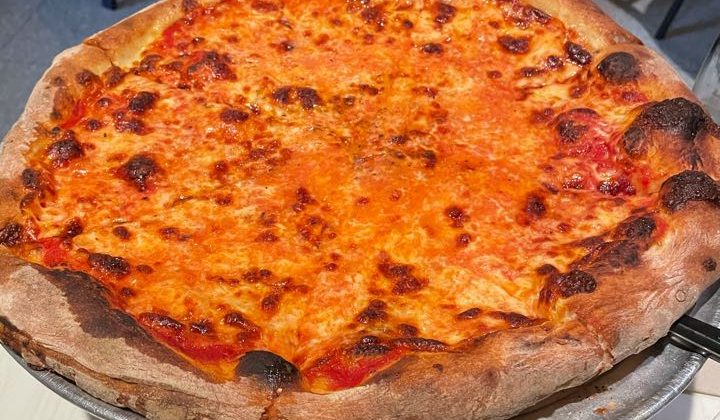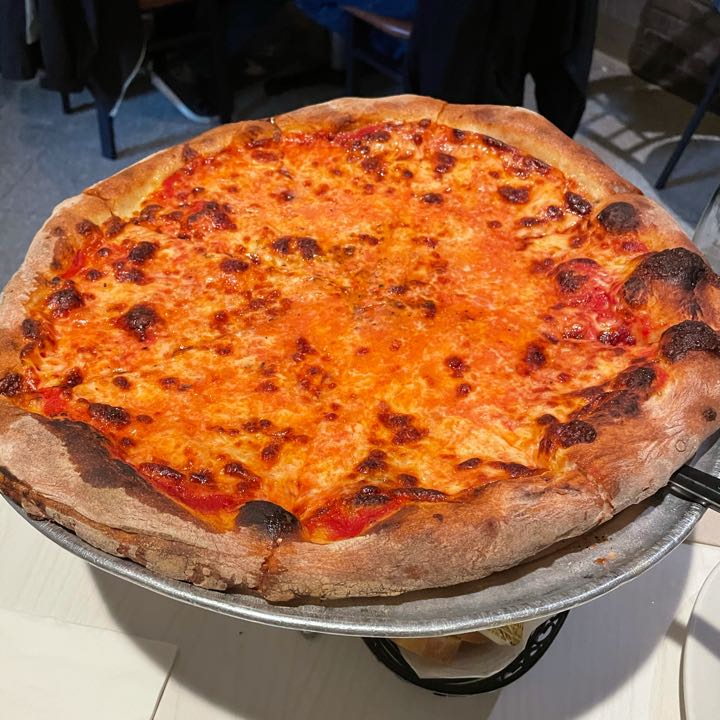

Over at The Atlantic, Saahil Desai calls our attention to Ora Dodd’s 1949 piece on pizza.
Here is a taste of Dodd’s essay:
The waiter moves aside the glasses of red wine, and sets before you a king-sized open pie. It is piping hot; the brown crust holds a bubbling cheese-and-tomato filling. There is a wonderful savor of fresh bread, melted cheese, and herbs. This is a pizza, Italian for pie. There is a plural, pizze, but no one ever uses it, for pizza is a sociable dish, always intended to be shared. Two people order a small pizza, about a foot in diameter. A large pizza is twice that size. Don’t imagine an American pie blown up to about two feet, however; a pizza is a nearer relation to a pancake. It is very flat, made of raised bread dough, with the filling spread on top.
In a world of ready-made food, packaged to be tossed together by amateurs, pizza stands apart—one dish, at least, which calls for time and skill.
Naples and the province of Napoli created pizza — just the invention you would expect of a laughing, convivial people, a dish made for family snacks, late suppers, and Carnival celebrations.
In this country, you can find it wherever there is an Italian colony, from the Latin Quarter in San Francisco to Bleecker Street in New York to Hanover Street in Boston. You eat it, usually, sitting in a booth in a bare, plain restaurant, with a mural of Vesuvio on the walls, a juke box, and a crowded bar. The customers are Italian families, Bohemians, lovers, and—if a college is near-by—students and faculty members.
If you go back into the kitchen, most pizza-makers are happy to show you their routine. They’re a friendly, casual class—nothing of the high-capped chef about them. To see them roll and twirl the pizza dough, spread the filling, and slide the pie into the oven, you would think theirs the simplest job in the world; but a baker spends months, or even years, in learning pizza-making to perfection. One Neapolitan told me that it takes two generations (he had learned from his father, now ninety-seven and still baking pizza in Italy, just as his five sons do).
Pizza begins with a brick oven. Without the hot, evenly heated brick oven floor, you cannot have pizza. Big Italian commercial restaurants may use gas-heated ovens, with sides of metal, but the floors are brick. The best oven is all-brick, heated by coal or coke, with even, long-lasting heat on all sides.
The pizza-maker, with his brick oven at one side, works surrounded by bowls of pizza sauce made of ground tomatoes (this is put up in gallon cans for restaurants or for anyone else who can use that quantity), and bowls of garnishes: ground cheese, anchovies, shredded green peppers, thinly sliced mushrooms, sliced Italian sausage, onion rings, bits of salami, and anything else an inventive pizza-maker can dream up. Garlic and chopped orégano (wild marjoram) are the seasonings, used as the customer may request.
Read the rest here. Writing this post made me hungry.